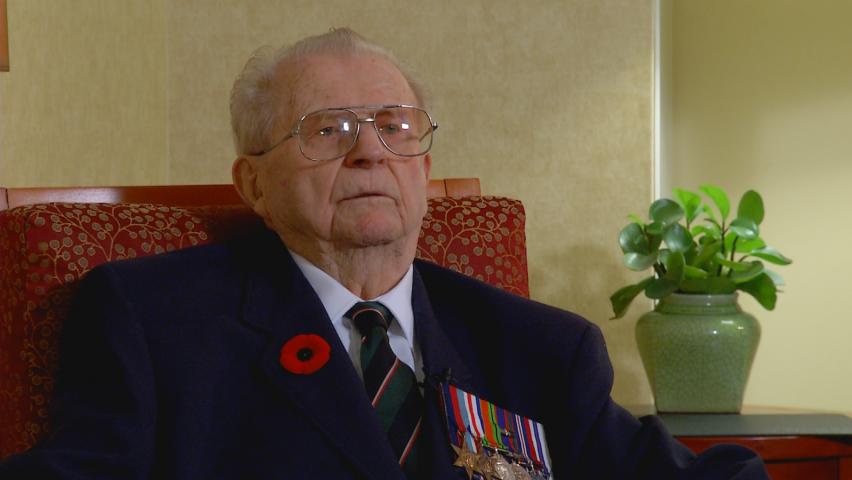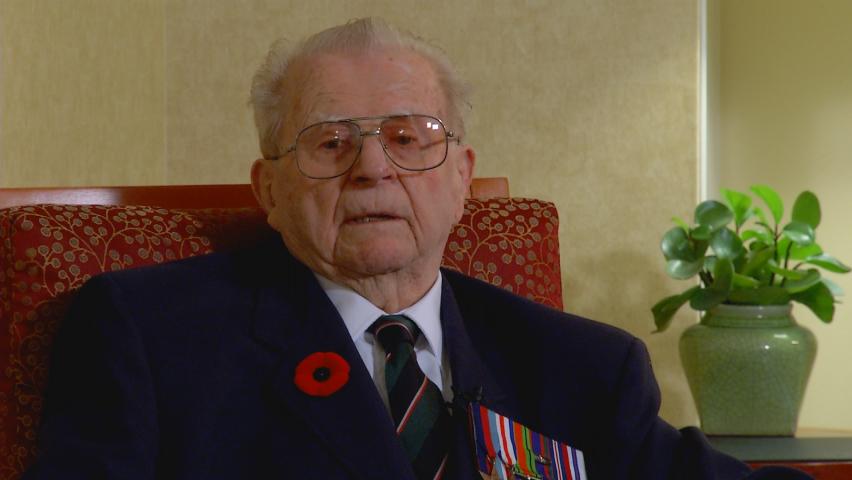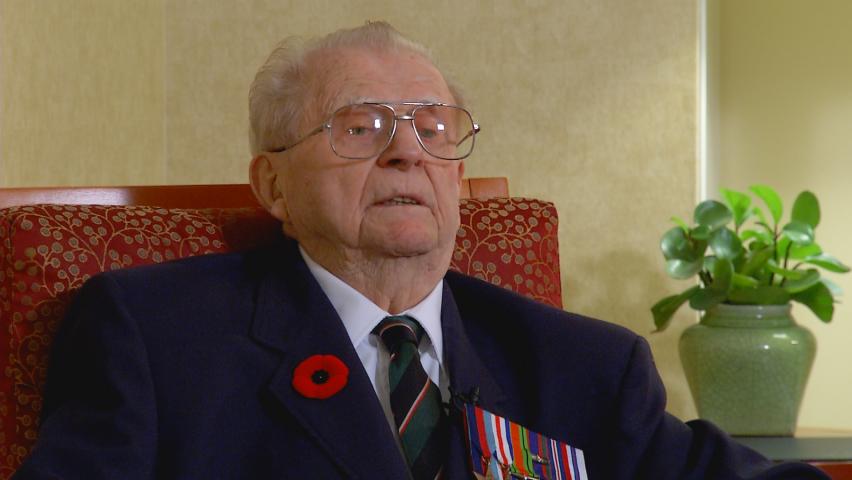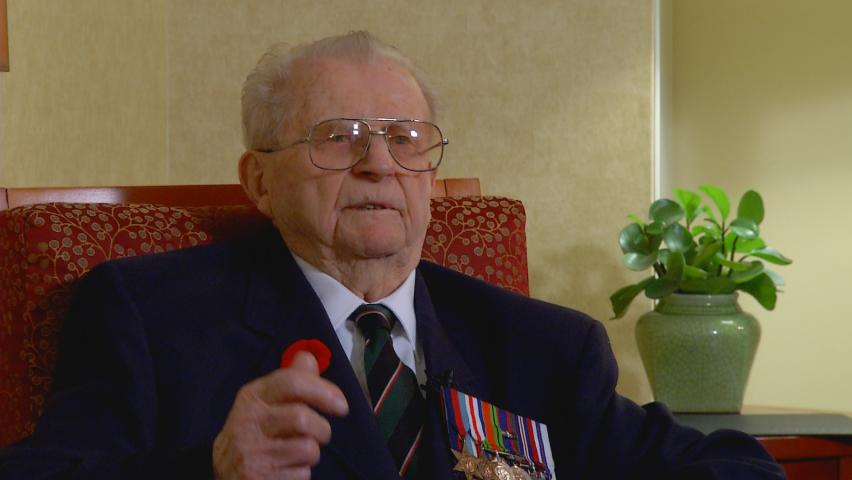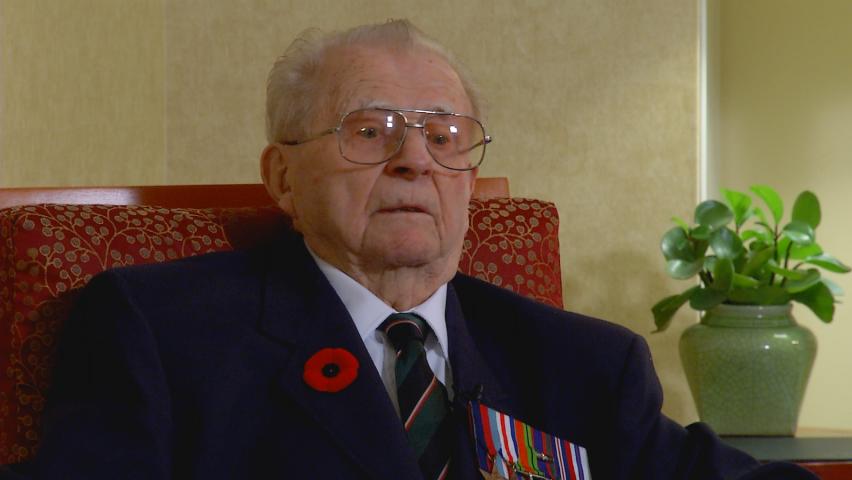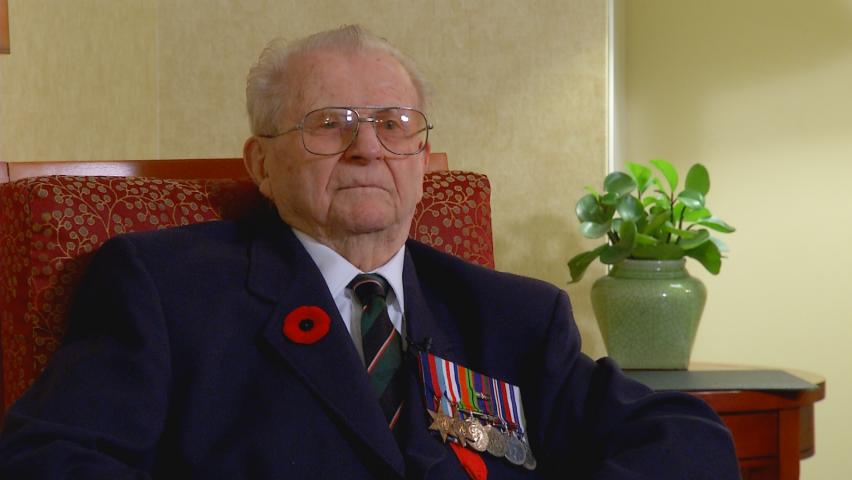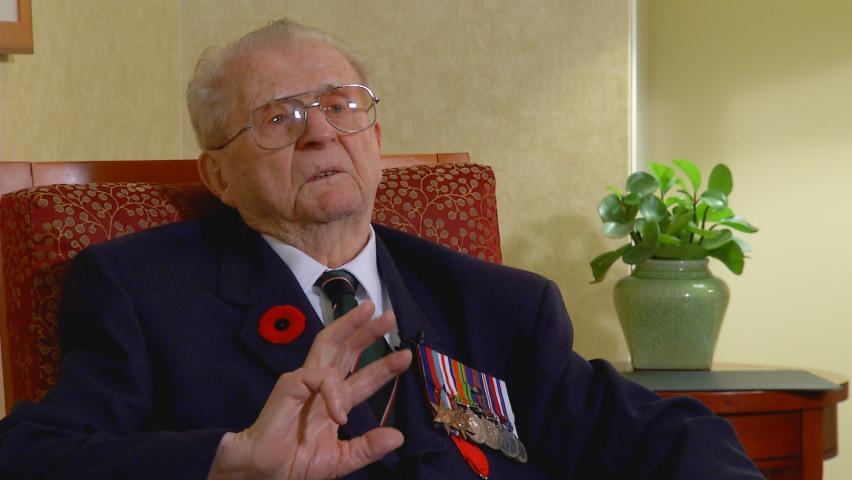The Journey Overseas
Heroes Remember
The Journey Overseas
Transcript
Description
Mr. Bernhardt shares the adventure of going overseas only to leave the port of Halifax and be involved in a collision with another ship, a rough start!
Charles Bernhardt
Mr. Charles Bernhardt was born March 13, 1921 in Yugoslavia. His father, a bricklayer, was from Hungary and came to Canada in 1927. The family followed the next year. Unable to recall too much of his childhood, Mr. Bernhardt does remember his happiness as a Canadian and that he always had the desire and pride to serve in the Canadian military. He chose to join the Canadian Armoured Division and served during in the Second World War in Normandy during the Battle of D-Day. He held the occupation of Brigadier General’s driver, a role he felt great pride in doing. Mr. Bernhardt is known for his participation in one of the most famous photos of all time which went for poster print, the “Wait for Me Daddy” poster which can be found displayed across Canada. In recognition of his service, Mr. Bernhardt received the Legion of Honour medal and was given the opportunity to be a part of the Canadian delegation for 100th Anniversary of the Battle of Vimy Ridge - a memory of honour he will hold for a lifetime. Mr. Bernhardt resides in Summerland, B.C.
Meta Data
- Medium:
- Video
- Owner:
- Veterans Affairs Canada
- Recorded:
- April 4, 2017
- Duration:
- 3:03
- Person Interviewed:
- Charles Bernhardt
- War, Conflict or Mission:
- Second World War
- Battle/Campaign:
- D-Day
- Branch:
- Army
- Units/Ship:
- Armoured Regiment
- Occupation:
- Driver
Related Videos
- Date modified:



